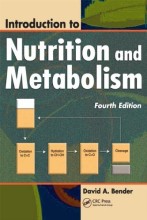NP10a Carb and amin oacid metabolism, ketogenesis
14 important questions on NP10a Carb and amin oacid metabolism, ketogenesis
Fructose vs glucose oxidation
- For both you use 2 ATP
- Both make DHAP + GA3P
Difference
- phosphofructokinase is not used in the fructose oxidation
The rate of glycolysis is controlled at the level of the conversion of fructose 6-P to fructose 1,6 diP. What is relevant?
- ATP inhibits, citric acid stimulates
- ATP and citric acid stimulate
- AMP stimulates, citric acid inhibits
Which of these pathways produce/consume glucose?
- glycolysis
- glycogenesis
- glycogenolysis
- gluconeogensis
- glycolysis - consuming
- glycogenesis - consuming
- glycogenolysis - producing
- gluconeogensis - producing
- Higher grades + faster learning
- Never study anything twice
- 100% sure, 100% understanding
What is true? Muscle can get most energy from:
- Its own glycogen
- Glycogen from liver
- Glycogen from the food
make a ranking in case of differences
calculate each of the options to G-6-P as enetry into glycolysis
- Its own glycogen --> you do not need ATP
- 0
- Glycogen from liver
- Glu -> G-6-P : - 1 ATP
- Glycogen from the food
- Glu -> G-6-P : - 1 ATP
Ketogenic amino acids are
- Nomenclature suggests also link to ketone bodies
- Pure ketogenic: Leucine and Lysine: Acetyl-CoA
- Glucogenic & ketogenic:
- Phenylalanine, Tryptophan, Isoleucine, Tyrosine
- Acetyl-CoA
- Acetoacetate (beton body)
- this Acetoacetate will not be taken into account for exam when amino acid oxidation is questioned!
What is Hepatic Ketogenesis
- brain relies on glucose, when glucose drops due to VLCD or fasting: ketones are needed for other organs as glucose is spared for brain
Ketogenesis only in liver
- 2 Acetyl-CoA --> Acetoacetate
- acetoacetate + 1 NADH --> beta-hydroxybutyrate
What is the usage of keton bodies?
- Mainly muscle and heart
- but also brain during starvation
- Reversal of ketogenesis, leading to Acetyl-CoA production
- Pivotal enzyme acetoacetate succintul-CoA transferase îs lacking in liver cells [securing hepatic ketogenesis, not hepatic usage]
The utilisation of ketone bodies in extra-hepatic tissues ->
NADH = 2.5 ATP
Makes 2 acetyl CoA
- Mention the 3 ketone bodies that can occur in the body
- Why are they formed?
- What is their common precursor?
- Do they provide the same ATP/mol
- If not, give a ranking
- Under which conditions will ketone acidosis arise?
- Acetoacetate, Aceton, Beta-hydroxybutyrate
- To help organs to survive (when there is not enough glucose)
- Acetyl CoA
- No (aceton = 0) and...
Dietary energy
- Is all dietary energy convertible to body fat?
- If so, is there energetic efficiency of this conversion to fat the same for fat, carbohydrates and protein from the diet?
- If not, make a ranking and explain the differences
- Is all dietary energy convertible to body fat?
- No
- If so, is there energetic efficiency of this conversion to fat the same for fat, carbohydrates and protein from the diet?
- From protein >glucose > lipid
- If not, make a ranking and explain the differences
- protein 33% heat increment, glucose 18% lipid 4%
Limiting amino acids
- Is every essential amino acid limiting?
- Is a limiting amino acid always an essential amino acid?
- Is every essential amino acid limiting?
- No, this depends on the dietary intake
- Is a limiting amino acid always an essential amino acid?
- Yes. Non-essentials are never limiting, as they can be synthesized
What could be meant by so-called protein and non-protein amino acids?
- Try to give an example (urea cycle)
- Citrulline, ornithine: amino acids not used for protein synthesis
N-content
- Which amino acid has the highest N-content?
- What is the percental level of N?
- Does this agree with the average level in protein?
- To which metabolic process is this amino acid related?
- Which amino acid has the highest N-content?
- Arginine (Arg): 4 N
- What is the percental level of N?
- mean 17%
- Does this agree with the average level in protein?
- no
- To which metabolic process is this amino acid related?
- urea cycle
- What is the level of free amino acids in the circulation?
- Why is this level so low compared to daily intake?
- What happens after a meal?
- What is the level of free amino acids in the circulation?
- It is toxic
- ±1124-4075 mumol/l = 1-4 mmol/l (=0.1-0.5 gram/l)
- Why is this level so low compared to daily intake?
- High = toxic (osmotic value)
- E.g. phenylalanine -> phenylketon -> retardation
- What happens after a meal?
- Proteins are degraded into amino acids which are taken up into tissues for 'storage' or new proteins. Faecal loss and urine loss for N balance
The question on the page originate from the summary of the following study material:
- A unique study and practice tool
- Never study anything twice again
- Get the grades you hope for
- 100% sure, 100% understanding
































